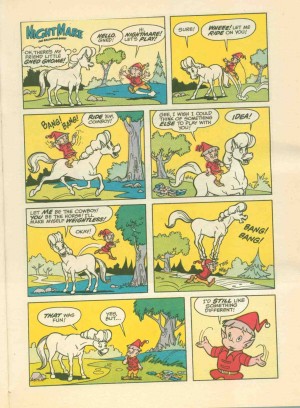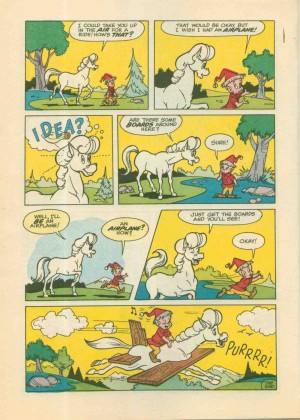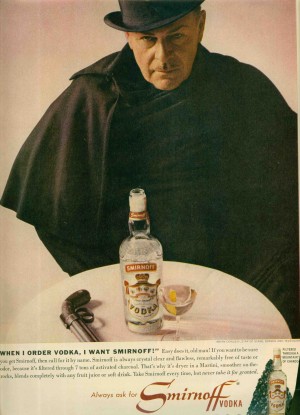History
Name That List #2
It's time again to play "Name That List." Identify where the items in this list come from. Googling is cheating.combs, razors, a 'piss pot', pomander, handheld sundials, urethral syringes, puncture syringe, trepan and feeding bottle;
human skeletal remains and bones of immature rat and small dog, butchered meat, fish bones, plum stones and peppercorns.
Answer on the comments page and in extended.
More in extended >>
Posted By: Alex - Tue Oct 14, 2008 -
Comments (4)
Category: History, Quizzes, Name That List
The Glass Delusion
An unusual psychiatric disorder swept through Europe during the late Medieval period. Many people came to believe they were made of glass "and therefore likely to shatter into pieces." Historians call this the Glass Delusion.A typical sufferer might have believed he was "a urinal, an oil lamp or other glass receptacle, or else he might himself be trapped within a glass bottle." (A "urinal" during the middle ages referred to a small flask... essentially a glass pee pee bottle.)
One famous early sufferer: the French king, Charles VI, who refused to allow people to touch him, and wore reinforced clothing to protect himself.
A 1561 medical account describes a patient "who had to relieve himself standing up, fearing that if he sat down his buttocks would shatter... The man concerned was a glass-maker from the Parisian suburb of Saint Germain, who constantly applied a small cushion to his buttocks, even when standing. He was cured of this obsession by a severe thrashing from the doctor, who told him that his pain emanated from buttocks of flesh."
In modern times, the glass delusion has disappeared. "Surveys of modern psychiatric institutions have only revealed two specific (uncorroborated) cases of the glass delusion. Foulché-Delbosc reports finding one Glass Man in a Paris asylum, and a woman who thought she was a potsherd was recorded at an asylum in Meerenberg."
One sign of the glass delusion's vanishing is that there's not much information about it on the internet. Not even a wikipedia entry about it. The above factoids came from "An odd kind of melancholy: reflections on the glass delusion in Europe," by Gill Speak, published in 1990 in the History of Psychiatry.
Posted By: Alex - Thu Oct 09, 2008 -
Comments (5)
Category: History, Psychology
Sign language among medieval monks sworn to silence

Medieval monks who had taken vows of silence developed a simple form of sign language to communicate (predating the development of modern sign language by centuries), and scholars know many of the signs they used.
Some examples of monastic sign language from the essay "Sign Language and Gestures in Medieval Europe: Monasteries, Courts of Justice, and Society," by August Nitschke:
I want to eat: repeatedly move the first three fingers towards the mouth.
I want to drink: place the tip of the thumb on the lips and tilt the fist like a bottle.
I am fasting: press together the lips with thumb and forefinger
Bread: make a circle using both your thumbs and the fingers next to them.
Milk: place all the fingers of your right hand around the smallest finger of your left and stretch the latter, imitating someone who is milking.
Honey: Let your tongue protrude for a moment and move your fingers close as if you intended to lick them.
A book: stretch our your hand, moving it as if turning the page of a book.
The Missal: Make the sign for a book, and in addition make the sign of the cross.
The Gospel: make the sign for a book, and then make the sign of the cross on your forehead.
Crying: take the index finger, which has been placed below the eye, moving it downward twice.
The Hallelujah: raise one hand and move the slightly curved upper side of the fingers in a way that suggests a flying motion.
Fire: Blow on the tip of the forefinger, which is held pointing up.
A fish: Keeping the fingers together, move the right hand, keeping it straight, in front of the body in a zigzag maner like a swimming animal.
More info: wikipedia, medievalists.net
Posted By: Alex - Wed Oct 01, 2008 -
Comments (4)
Category: History
Survival Under Atomic Attack
A reader named John, commenting on the WHY STUDY SCIENCE? thread, asked to see a film about surviving atomic attack. Here it is, John!(There's no static image on the screen, but just click the PLAY button on the bottom of the viewing window.)
Posted By: Paul - Wed Sep 24, 2008 -
Comments (8)
Category: Armageddon and Apocalypses, Disasters, History, Military, Movies, Patriotism, Technology, War, Weapons, Reader Recommendation, 1950s, Yesterday’s Tomorrows
The Isetta
A car designed and built by a refrigerator company? Yes, that was the Isetta.
Posted By: Paul - Sun Sep 14, 2008 -
Comments (10)
Category: Business, Products, History, Inventions, Collectors, 1950s, Europe, Cars, Yesterday’s Tomorrows
Harvey Comics
I loved reading Harvey Comics as a kid, and into "adulthood." (They're not published anymore, alas.) Their universe was quintessentially wacked and weird. As famed comics scribe Grant Morrison has remarked in an interview, sometimes the willed naivete of Silver Age writers following the Comics Code produced much stranger stuff than any consciously avant-garde writer could.
Take the two page strip to the right for instance, from an old digest-reprint of some Casper stuff. To parse it is to risk madness.
Is Nightmare indeed a mare, ie, female? if not, and even if so, is that the gayest hairdo ever, on horse or human? Why does a forest gnome like to hang out with a ghost horse? Why is playing human cowboys popular among the gnomes? Likewise riding an airplane. And finally, how demented does a ghost horse have to be, to stick planks up its butt and into its chest, and then purr like a cat, all in an effort to emulate a mechanical device so as to placate a gnome?
How I miss Harvey Comics! Thank goodness Dark Horse is reprinting some.....
Posted By: Paul - Tue Sep 09, 2008 -
Comments (15)
Category: Animals, Art, Comics, Pop Art, Surrealism, Body Modifications, Drugs, Entertainment, Flight, Games, History, Inventions, Pets, Writers, Cartoons, Hair Styling
Follies of the Mad Men #25

Let's watch A TOUCH OF MAGIC.
Posted By: Paul - Mon Sep 08, 2008 -
Comments (8)
Category: Business, Advertising, Products, Domestic, Marriage, Family, Husbands, Wives, Food, Futurism, History, Inventions, Movies, Pop Culture, Technology, Sex Symbols, 1960s, Dance, Cars, Yesterday’s Tomorrows
Follies of the Mad Men #15
[From Life for May 22 1964.]Our booze appeals mainly to Eighteenth-century highwaymen.
Posted By: Paul - Wed Aug 27, 2008 -
Comments (1)
Category: Business, Advertising, Celebrities, Crime, History, Hollywood, Inebriation and Intoxicants, 1960s
Buddhist relic
After this, a little sliver of the True Cross looks kinda paltry....
Posted By: Paul - Tue Aug 26, 2008 -
Comments (5)
Category: Body Modifications, Death, Fads, History, Historical Figure, Human Marvels, Religion, War, Foreign Customs, 1960s
The South Will Collect Its Pensions Again!
Posted By: Paul - Mon Aug 25, 2008 -
Comments (3)
Category: Animals, Death, Obituaries, History, Historical Figure, Hollywood, Literature, Books, Regionalism, War, Cartoons, Marriage

| Who We Are |
|---|
| Alex Boese Alex is the creator and curator of the Museum of Hoaxes. He's also the author of various weird, non-fiction, science-themed books such as Elephants on Acid and Psychedelic Apes. Paul Di Filippo Paul has been paid to put weird ideas into fictional form for over thirty years, in his career as a noted science fiction writer. He has recently begun blogging on many curious topics with three fellow writers at The Inferior 4+1. Contact Us |








